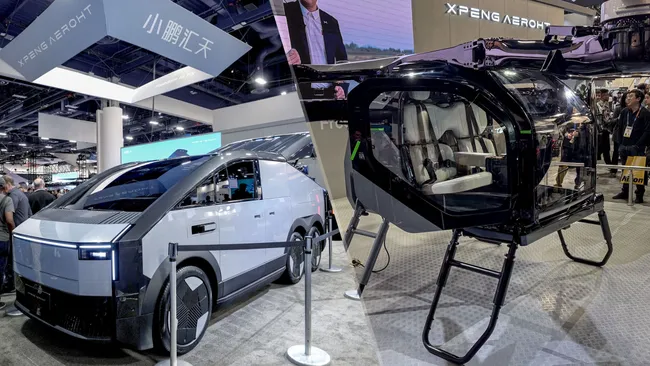At CES 2025, a new modular flying car drew the attention of dozens of onlookers as it made its way into the spotlight. The vehicle, known as the Land Aircraft Carrier, was presented by Xpeng, a Chinese company that has positioned itself as a global leader in the flying car industry. Xpeng’s display included not only the Land Aircraft Carrier—a massive electric SUV—but also its innovative eVTOL (electric vertical takeoff and landing) Air Module, which can fold out from the vehicle’s rear and take off, effectively transforming the SUV into a flying machine. This development is poised to overshadow even Tesla’s Cybertruck in terms of futuristic capabilities.

With over 3,000 intent orders already placed, Xpeng is on track to become the first company to mass-produce a modular flying car, with deliveries scheduled for 2026. The Land Aircraft Carrier is expected to cost under $300,000, a price that might seem reasonable given the advanced technology and functionality it offers, resembling something straight out of a sci-fi film.
>>>7034100 Replacement Battery for Hubsan H501S H501C Remote Control Aircraft Drone Model
The Air Module: A Unique Experience
The Air Module inside the Land Aircraft Carrier is designed with three distinct target audiences in mind: aviation enthusiasts and licensed pilots, high-tech early adopters who might typically purchase premium vehicles like high-end Teslas, and outdoor lovers who enjoy exploring remote areas.
The Air Module’s primary purpose is not for daily commuting but rather for adventurous exploration, such as traveling to remote or difficult-to-reach locations. It offers a more immersive experience than using drones for sightseeing, allowing the owner to fly themselves over nature reserves, mountains, or other scenic terrains.
Inside the cockpit of the eVTOL air module, the controls are intuitive and user-friendly, with a central joystick and a large touchscreen. Ideally, the user would simply tap on the touchscreen and allow the vehicle to take control of the flight, though manual navigation is possible via the joystick. The Air Module boasts a 270-degree panoramic view, providing a sweeping vista of the surroundings. It is powered by an 800-volt silicon carbide high-voltage platform and has already undergone thousands of test flights across 200 units, demonstrating its reliability and performance.
The Land Aircraft Carrier: A Technological Marvel
The Land Aircraft Carrier itself is a six-wheeled behemoth, designed with angular lines and inspiration from lunar rovers. Apart from being the home for the flying Air Module, the Land Aircraft Carrier features a range of advanced technology. For instance, it is equipped with cameras that replace traditional side mirrors, offering a modern, sleek alternative. Additionally, the vehicle includes a transparent privacy window on the side, allowing passengers to see out while ensuring that no one can look in.
One of the standout features of the Land Aircraft Carrier is its onboard autonomous separation and reconnection system. This unique technology allows the Air Module to detach from and reattach to the vehicle automatically, making it possible to house the flying module within the SUV’s trunk—a truly “mothership” design.
>>>FPB0367S Replacement Battery for Fujitsu FPB0367S
Performance and Range
In terms of performance, the Air Module has a flying range of approximately two hours per charge, with a maximum speed of 90 km/h (roughly 55 mph). As for the Land Aircraft Carrier itself, it can support up to six recharges, providing ample power for extended adventures.
Though this modular flying car will not be available in the U.S. in the immediate future, the fact that it is moving toward mass production in 2026 marks a significant milestone in the development of personal air mobility. It represents a major leap forward in integrating flying vehicles into everyday life, albeit for a select group of users with the necessary interest and budget to embrace the future of transportation.